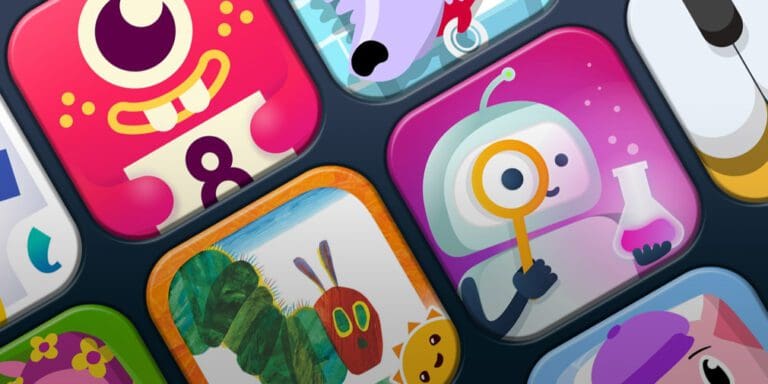Nano-Learning: The Future of Skill Acquisition
If you’re looking for a way to upskill in a short amount of time, nano-learning might be just what you need. Nano-learning, also known as micro-learning or bite-sized learning, involves delivering small, easily digestible pieces of information that can be completed quickly. This type of learning is becoming increasingly popular in today’s fast-paced world, where people are looking for quick and efficient ways to learn new skills.
Nano-learning is often delivered through e-learning platforms or learning management systems, making it accessible to anyone with an internet connection. Interactive quizzes and other engaging content can also be used to make the learning experience more enjoyable and effective. This type of learning is particularly useful for remote workers or those with busy schedules, as it allows them to fit learning into their day without disrupting their workflow. Corporate training programs are also starting to adopt nano-learning as a way to keep employees up-to-date with the latest skills and knowledge.
What is Nano-learning?
Nano-learning is a relatively new concept in the world of education and training that refers to small, bite-sized learning experiences that can be completed in a short amount of time compared to traditional educational experiences. These types of learning experiences are typically designed to be easily accessible and digestible, often using technology to deliver content in a quick and efficient manner.
One of the main benefits of nano-learning is that it allows you to upskill or learn something new quickly, making it a great option for busy professionals who don’t have a lot of free time to dedicate to learning. Nano-learning can be accessed from anywhere, making it a great option for remote work or corporate training.
Nano-learning is sometimes referred to as micro-learning or bite-sized learning, often delivered through e-learning platforms or learning management systems. Interactive quizzes and infographics are also popular tools used in nano-learning.
Overall, nano-learning is a great way to quickly and efficiently gain new knowledge and skills. Whether you’re looking to upskill for your current job or learn something new for personal development, nano-learning can help you achieve your goals in a time-efficient manner.
Benefits of Nano-learning
If you’re looking for a flexible, engaging, and convenient way to upskill, nano-learning may be the perfect solution for you. This innovative learning method is designed to deliver highly targeted training in bite-sized chunks, making it easy to fit into your busy schedule. Here are some of the key benefits of nano-learning:
Flexibility
One of the biggest advantages of nano-learning is its flexibility. You can learn at your own pace, whether you’re at home, at work, or on the go. Nano-learning programs are self-contained and can be accessed from any device with an internet connection, making it easy to fit learning into your daily routine. This is especially important for remote workers, who may not have access to traditional training programs.
Engagement
Nano-learning is designed to be engaging and interactive, using a variety of multimedia tools such as videos, images, animations, and infographics. Short videos and interactive quizzes help to keep learners engaged and focused, while gamification elements can make learning more fun and rewarding. This approach helps to improve retention and critical thinking skills.
Convenience
Nano-learning is highly convenient and cost-effective, making it an ideal solution for corporate training, onboarding, and leadership development. It can be easily integrated into a learning management system, allowing learners to access training materials from anywhere at any time. This approach reduces the need for expensive classroom-based training and can help improve efficiency and productivity on construction sites and other work environments.
In conclusion, nano-learning is a highly effective way to learn new skills and upskill quickly. Whether you’re an individual looking to improve your career prospects or a business looking to improve your employees’ skills, nano-learning can provide a cost-effective and easily accessible solution.

How to Implement Nano-learning
Nano-learning is a highly targeted learning approach that delivers bite-sized learning content to learners. It is a flexible and cost-effective way to upskill employees, improve their engagement, and boost retention.
Creating Nano-learning Content
Creating nano-learning content requires a different approach than traditional e-learning. You need to focus on a single learning objective and deliver it in a self-contained module. Here are some tips to help you create effective nano-learning content:
- Use pre-built templates: Pre-built templates can save you time and effort in creating nano-learning content. They are designed to be responsive and support rich media such as images, animations, and videos.
- Keep it short: Nano-learning content should be short and to the point. It should take no longer than 15 minutes to complete.
- Use multimedia: Use multimedia such as videos, animations, and interactive activities to keep learners engaged.
- Use gamification: Gamification can help make nano-learning content more engaging. You can use quizzes, challenges, and rewards to motivate learners.
Delivering Nano-learning Content
Delivering nano-learning content requires a different approach than traditional e-learning. You need to make it easily accessible and convenient for learners. Here are some tips to help you deliver effective nano-learning content:
- Use a learning management system: A learning management system (LMS) can help you deliver nano-learning content to your learners. It can track their progress and provide feedback.
- Make it responsive: Nano-learning content should be responsive and work on any device. It should also be easily accessible to learners.
- Use social media: Social media platforms such as TikTok, Twitter, and LinkedIn can be used to deliver nano-learning content. You can create short videos or infographics and share them with your network.
- Use email: Email can be used to deliver nano-learning content to learners. You can send them a series of emails that contain short video lectures or interactive quizzes.
- Use remote work tools: Remote work tools such as Zoom or Microsoft Teams can be used to deliver nano-learning content to remote employees.
In conclusion, nano-learning is a highly effective way to deliver employees short, engaging, and interactive training. By following the tips outlined in this section, you can create a successful nano-learning program that improves engagement, and retention, and upskills your workforce.
Challenges of Nano-learning
Nano-learning can effectively engage learners and make learning stick, but it also comes with its own set of challenges. Here are some of the challenges you may face when implementing nano-learning:
Attention Span
One of the biggest challenges of nano-learning is attention span. With the rise of remote work, learners are increasingly distracted by notifications and other interruptions. As a result, it can be difficult to keep learners engaged and focused on the material. To overcome this challenge, keeping your nano-learning modules short and focused is important, with clear learning objectives and engaging content.
Retention
Another challenge of nano-learning is retention. Because nano-learning modules are short and focused, learners may not retain the material as well as they would with longer-form learning. To overcome this challenge, it’s important to reinforce the material with follow-up activities and assessments. This will help learners retain the material and apply it in real-world situations.
Engagement
Engaging learners is another challenge of nano-learning. Because nano-learning modules are short, creating engaging content that keeps learners interested can be difficult. To overcome this challenge, it’s important to use a variety of multimedia elements, such as videos, animations, and interactive activities. This will help keep learners engaged and motivated to learn.
Remote Work
With the rise of remote work, nano-learning has become even more important as a way to train and upskill employees. However, remote work also presents its own set of challenges, such as limited access to resources and a lack of face-to-face interaction. To overcome these challenges, it’s important to use a variety of delivery methods, such as online training platforms and virtual classrooms, and to provide learners with access to resources and support.
In conclusion, nano-learning can be an effective way to engage learners and make learning stick, but it also comes with its own set of challenges. By keeping your modules short and focused, reinforcing the material with follow-up activities and assessments, using a variety of multimedia elements, and providing learners with access to resources and support, you can overcome these challenges and create effective nano-learning programs.
Conclusion
In today’s fast-paced world, where time is of the essence, Nano-learning has emerged as a powerful tool for modern learners who seek concise and accessible learning resources. Its bite-sized format, flexibility, engagement, and personalization make it an ideal fit for busy professionals who want to upskill or learn something new.
Nano-learning is a new branch of education derived from e-learning and based on small pieces of learning, known as nano-learning. It is designed to be easily accessible and digestible, often using technology to deliver content in a quick and efficient manner. With the rise of remote work and corporate training, Nano-learning has become essential to the learning management system.
Micro-learning is a subset of Nano-learning that focuses on delivering information in small, easily digestible chunks. Interactive quizzes effectively deliver micro-learning content, providing learners with immediate feedback and reinforcement of key concepts. This type of learning is particularly useful for corporate training, where employees need to learn new skills quickly and efficiently.
In conclusion, Nano-learning has changed the way we approach education and training. It is a flexible and efficient way to learn, allowing learners to fit education into their busy schedules. As technology continues to evolve, we can expect to see more innovations in Nano-learning and its application in education and training.
FAQ
What is an example of nano learning?
Nano-learning is a type of learning that is designed to be short, simple, and easy to digest. An example of nano learning might be a short video tutorial on how to use a new software program or a quick quiz to help you review a specific topic. Nano-learning is all about providing small, bite-sized pieces of information that you can quickly and easily consume without spending much time or effort on a single topic.
What is micro vs nano learning?
Microlearning and nano learning are both types of learning that are designed to be short and easy to consume. However, there is a difference between the two. Microlearning typically refers to learning experiences that are a bit longer than nano learning but still relatively short. For example, a micro-learning experience might be a 10-minute video tutorial, while a nano-learning experience might be a 2-minute tutorial. The key difference between the two is that nano learning is even shorter and more focused than microlearning.
What is the importance of nano learning?
Nano-learning is important because it allows you to quickly and easily acquire new knowledge and skills without spending much time or effort on a single topic. This makes it ideal for busy professionals who need to learn new things quickly or for students who want to review key concepts in a short amount of time. Nano-learning is also highly accessible, as it can be delivered through a variety of channels, including mobile devices, social media, and online learning platforms.
What are the disadvantages of nano learning?
One of the main disadvantages of nano learning is that it can be too brief to provide a comprehensive understanding of a topic. Because nano-learning experiences are so short, they may not provide enough context or depth to understand a complex topic fully. Additionally, nano learning experiences may not be suitable for all types of learners, as some people may prefer more in-depth, immersive learning experiences.
What programming language does Nano use?
Nano learning is not a programming language but rather a learning experience that can be delivered through various channels, including text, images, audio, and video. As such, the specific programming languages used to create nano-learning experiences will depend on the specific platform or tool being used to create the content.
What is nano study?
Nano-study is a type of learning that is designed to be short, focused, and easy to consume. Nano-study experiences may include short quizzes, flashcards, or other interactive activities, allowing you to review key concepts and information quickly. Nano study is ideal for busy professionals or students who need to review key information quickly without having to spend a lot of time on a single topic.







